| | Markets rise on hopes of the US shutdown ending, Chinese builders face obstacles in the MidEast, and͏ ͏ ͏ ͏ ͏ ͏ |
| |  | Flagship |  |
| |
|
The World Today | 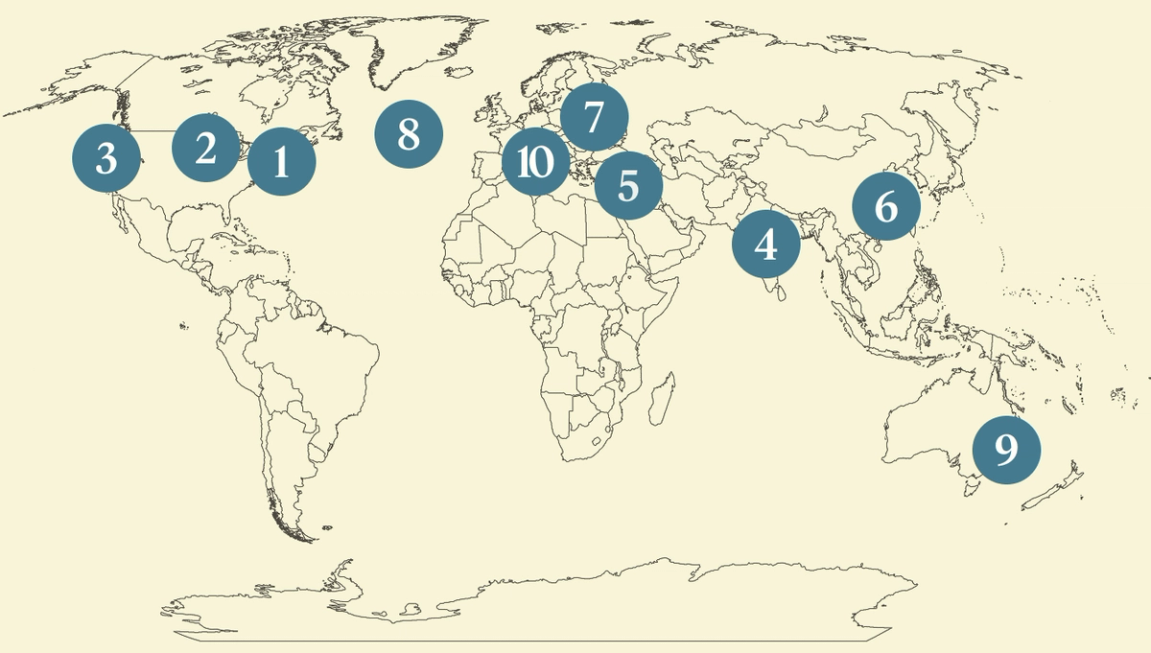 - US shutdown close to ending
- Trump fights economic vibes
- Data centers sit empty
- India’s grid deadlock
- Al-Sharaa at the White House
- Chinese builders in MidEast
- Nord Stream investigation
- Subsea cable market
- World’s biggest electric ship
- Penne for your thoughts
 Art that captures the moral dilemma of scientific progress, and a dispatch from COP30 in the Amazon. |
|
Markets rise on shutdown progress |
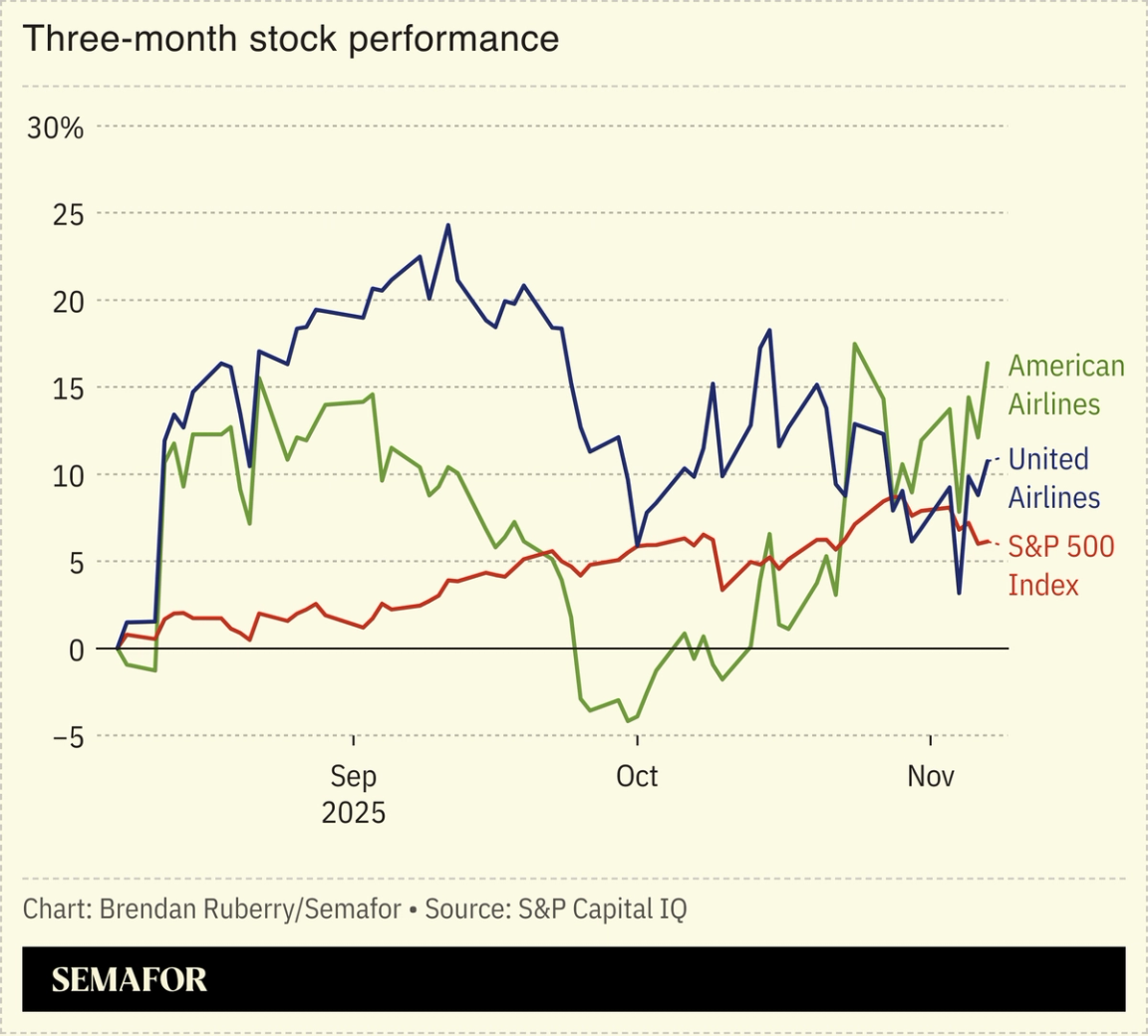 US lawmakers on Monday inched closer to reopening the government, as the White House backed a deal that advanced in the Senate. The historically long shutdown is now on track to end this week, analysts said, which would allow the government to resume food stamp benefits and resolve air travel chaos wrought by staffing shortages. The proposed funding package exposed divisions among Democrats, but lifted spirits on Wall Street; US shutdowns typically don’t upend markets, but investors have been particularly jittery about the lack of government economic data and potential holiday travel upheaval. Monetary policymakers have “been stumbling around in this fog and I think markets would like some clarity one way or another,” a UBS economist said. |
|
Trump fights public opinion on economy |
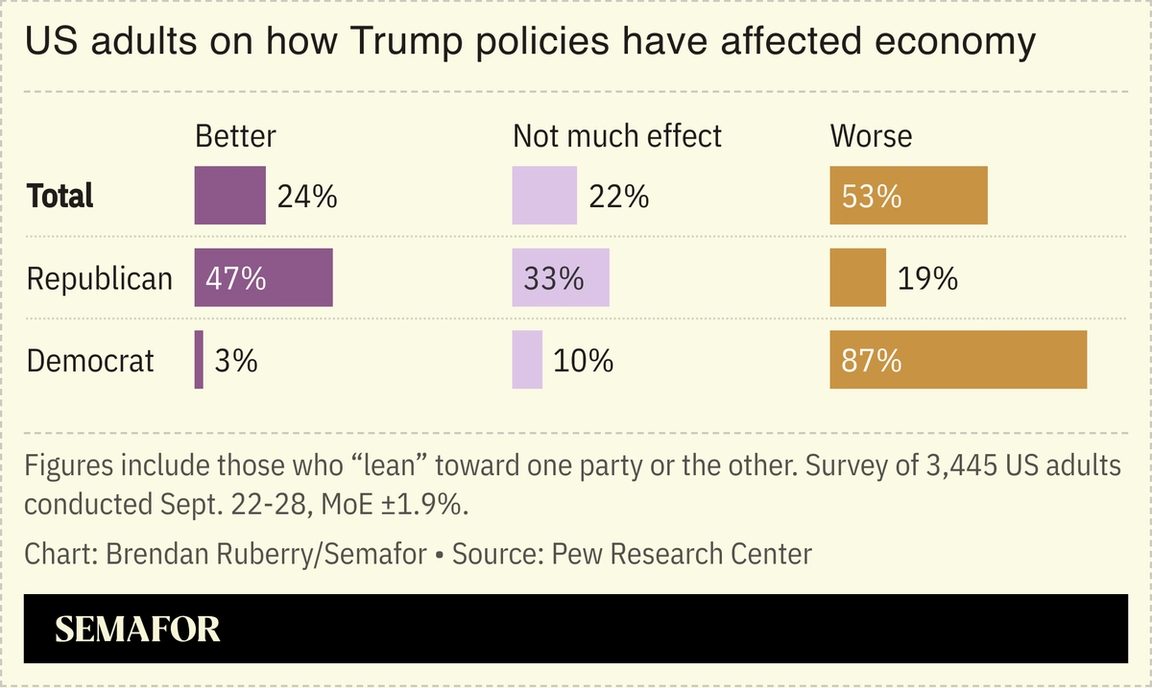 Americans appear increasingly convinced the economy is moving in the wrong direction, despite US President Donald Trump’s insistence to the contrary. Even as inflation has largely remained in check and stocks have surged, the White House finds itself combatting a public narrative that blames the president for rising costs and a cooling labor market. Democrats across the country who ran affordability-focused campaigns trounced Republicans in elections last week. The economy is “resilient on the surface,” but increasingly dependent on three “A-pillars,” an EY-Parthenon economist said: “affluent consumers, artificial intelligence-fueled investment and asset price gains.” Conservatives, too, are growing frustrated with Trump’s approach; The Federalist’s CEO said Trump should “ditch the foreign policy crap and focus all his attention on the domestic economy.” |
|
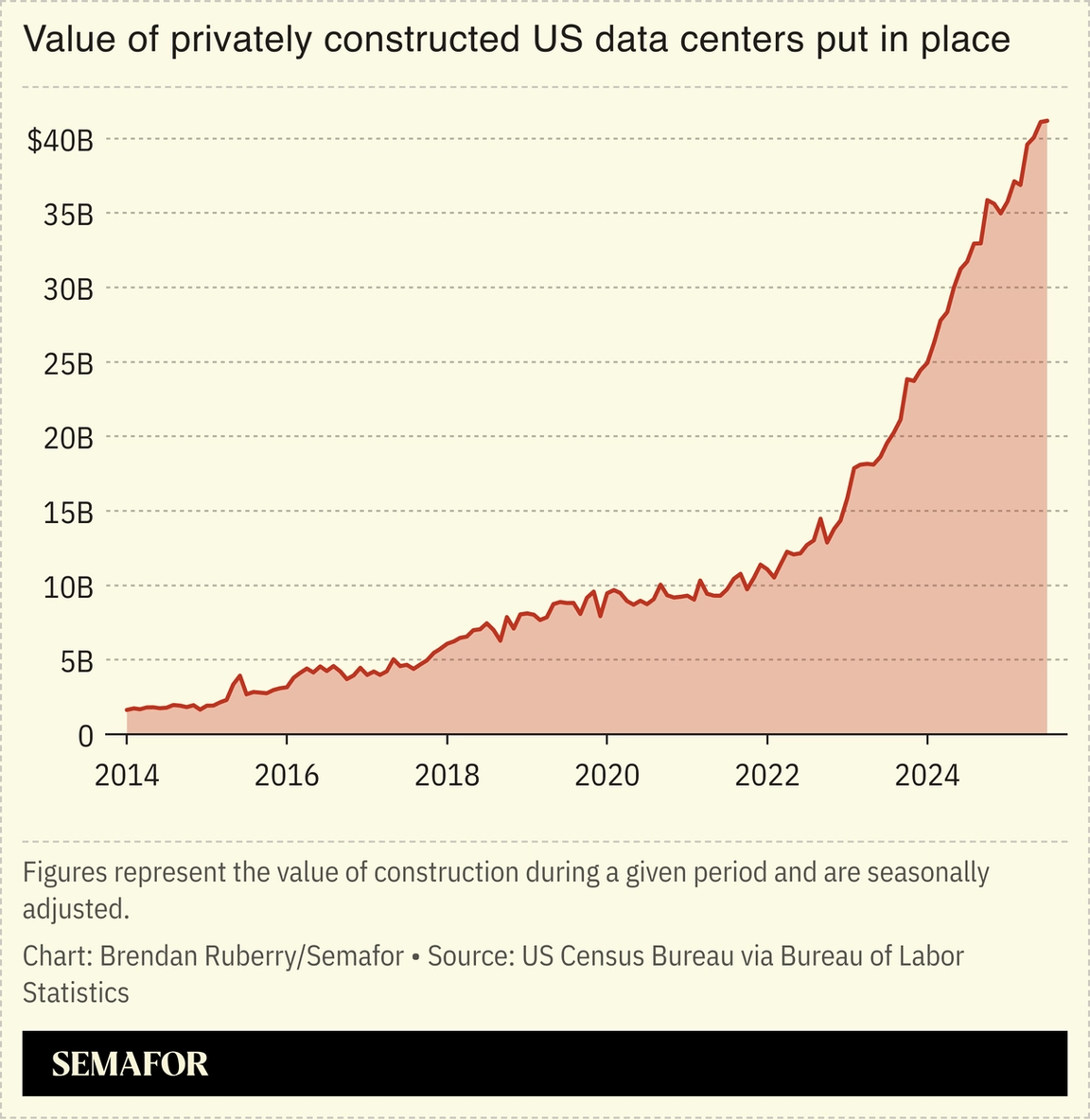 Some US data centers are standing empty because of a lack of electricity, highlighting challenges in keeping up with ballooning demand for AI. One California facility, located in Nvidia’s hometown, has been awaiting energization for six years, Bloomberg reported; an energy company estimates large data centers could take up to seven years to come online. “The biggest barrier to progress isn’t money but energy,” an MIT Technology Review reporter noted, arguing the US could learn from China’s energy abundance. The data center explosion has created boom towns across the US, but strained grids and increased housing prices and energy costs. Ironically, The Atlantic wrote, energy constraints could keep the AI boom from “growing too irresponsibly.” |
|
India grid lag curtails green buildout |
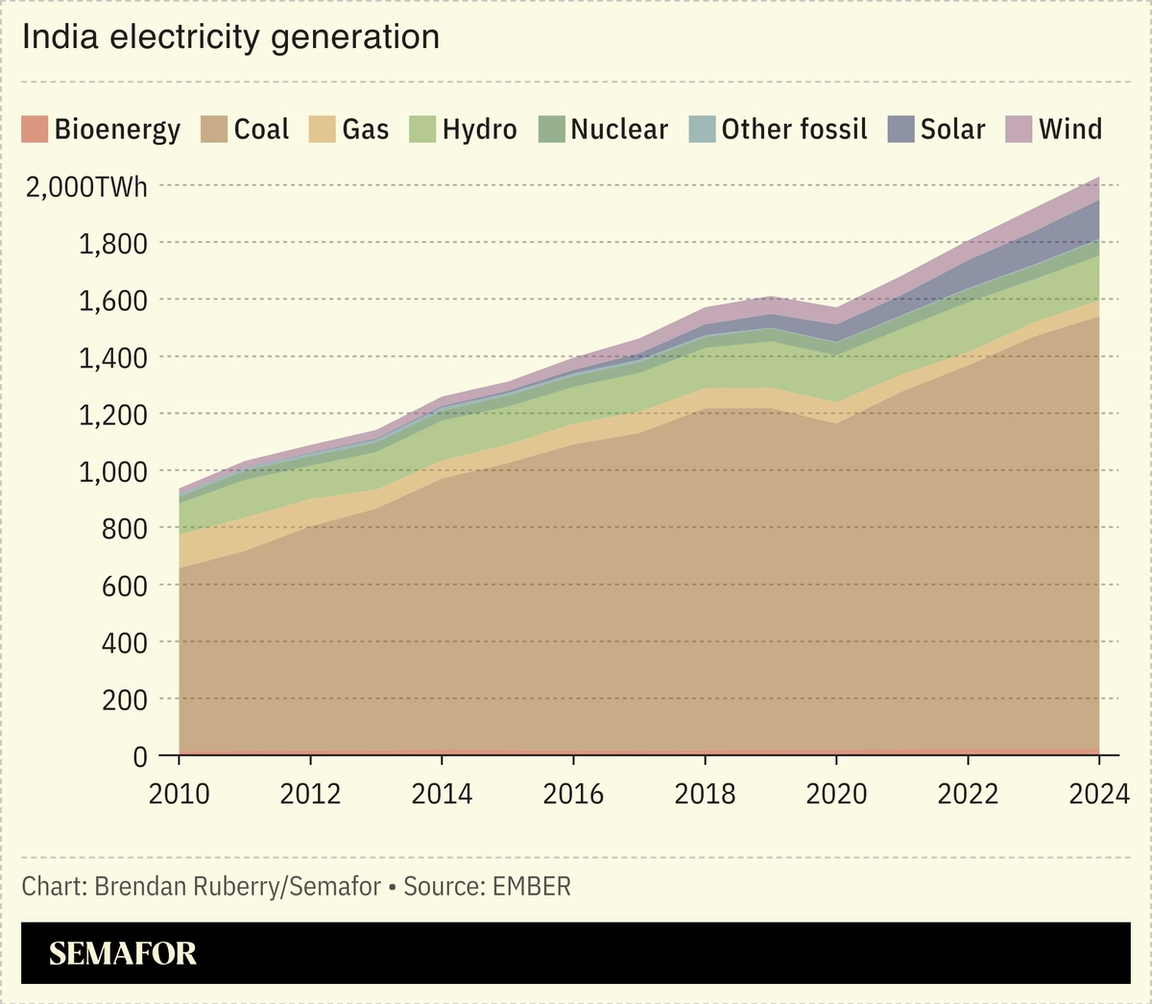 India’s energy grid isn’t keeping up with a surge in clean power. The country wants to reach 500 gigawatts of renewable energy capacity by 2030, but “we won’t be able to exceed it because there’s not enough transmission,” a developer told the Financial Times. Renewable projects are built in 12 to 18 months, but transmission lines — which carry electricity to the places where people need it — can take three to five years. The buildout is sometimes delayed by regulations like mandates that cables run underground in bird habitats, Down To Earth magazine reported. “To perfect the timing is impossible,” a leading industry CEO said. China has similarly seen wind and solar energy go to waste because of grid bottlenecks. |
|
Al-Sharaa makes historic DC trip |
 Kevin Lamarque/Reuters Kevin Lamarque/ReutersSyrian President Ahmed al-Sharaa visited the White House on Monday, capping a remarkable turnaround for a man the US once considered a wanted terrorist. The US lifted some restrictions on al-Sharaa before his meeting with President Donald Trump, which marked the first-ever visit by a Syrian president to Washington. But the new government, led by former rebels who toppled Bashar al-Assad, is urging US lawmakers to repeal the most punishing sanctions isolating Syria from the world economy. Critics oppose removing all restrictions at once without retaining the ability to easily reimpose them; supporters say doing so is the only way to give investors certainty. Al-Sharaa has been on a recent diplomatic blitz, with stops in Moscow and Saudi Arabia. |
|
China builders hit roadblocks in the Gulf |
 Salah/Xinhua via Getty Images Salah/Xinhua via Getty ImagesChinese construction companies are looking to the Middle East in the wake of a domestic property slowdown, but are running into roadblocks in the unfamiliar market. “Saudi Arabia now is like China 30 years ago,” a Shenzhen-based contractor told Caixin, as infrastructure spending in the region booms. But Chinese builders said they’ve grown frustrated — particularly in Saudi — by strict contractual terms, fierce competition, and rules around local hiring requirements and ESG standards, which aren’t common in China. It’s another setback for China’s property sector following a prolonged slump, which Beijing hopes to offset by boosting manufacturing. But the country’s real estate market is so “absolutely gargantuan” that the entire economy is suffering, an Economist editor told Bloomberg’s Odd Lots podcast. |
|
Nord Stream investigation row |
 Suspect Volodymyr Zhuravlyov. Omar Marques/Getty Images Suspect Volodymyr Zhuravlyov. Omar Marques/Getty ImagesAn investigation into the alleged Nord Stream saboteurs is threatening to fracture Europe’s support for Ukraine. German authorities have built a case implicating an elite Ukrainian unit in the 2022 pipeline explosions, opening diplomatic and political fissures: Poland refused to extradite one suspect, calling him a “hero” and criticizing Berlin’s past purchases of Russian gas, while Germany’s far-right opposition politicians have seized on high energy prices and the suspects’ nationality to undermine support for Kyiv. “The diplomatic fallout of the bombings might have been easier for Germany to navigate if their detectives hadn’t so effectively built a case against Ukraine,” The Wall Street Journal wrote. |
|
 Will Welch is the global director of GQ, and has been the editor-in-chief of its US operation since 2019. On this week’s Mixed Signals, Welch talks to Ben and Max about how the magazine plans to address men amid the prominence of the manosphere, the value in covering niche subcultures, and how the magazine’s parties operate as content creation mechanisms. Welch also talks about how he works with celebrities and praises Robert Pattinson as a more creative collaborator than he’s used to. |
|
Subsea cable connects US to Ireland |
 Amazon AmazonAmazon announced its first wholly owned transatlantic cable, as subsea infrastructure increasingly moves from public to private ownership. The Fastnet cable, set to begin operation in 2028, will run from the US state of Maryland to Ireland’s west coast. The earliest undersea cables were commercially owned — the first, from England to France, was laid in 1850 by the English Channel Submarine Telegraph Company. But after World War I, governments and national telephone operators took a bigger role until the late 1990s, when private ownership took off again: Google is now the world’s largest owner of submarine cable networks, while between them, Amazon, Google, Meta, and Microsoft own or lease around half of all undersea bandwidth worldwide. |
|
World’s biggest electric ship charges up |
 Incat IncatThe world’s largest battery-electric ship is charging up. The Australian-built Hull 096 contains a 40 megawatt-hour energy storage system, enough to power about four US homes for a year. That vast amount of energy will, because of the ship’s size and speed, only be enough for 90 minutes’ travel: It is designed to carry up to 2,100 passengers and 225 cars on a roughly 40-mile journey between ports in Argentina and Uruguay before charging up again in 40 minutes. Batteries are still much less energy-dense than diesel fuel, so long-haul shipping remains implausible, but Hull 096 will “test the limits of maritime electrification,” IEEE Spectrum wrote. China, Norway, and the US are also racing to build electric ferries. |
|
|